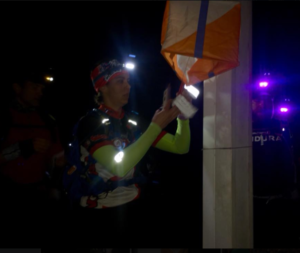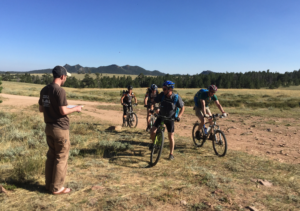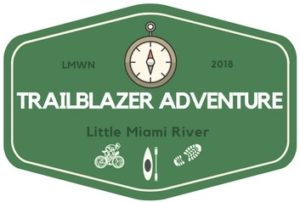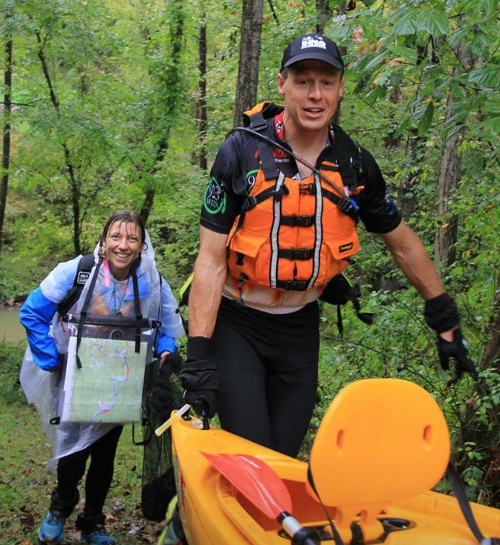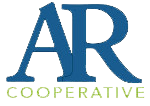by Jess Evans
October 3, 2018
Back in the comfort of my home, I get to reflect on the USARA 2018 Championship race in Bloomington, Indiana. I am certain that strategy was key in this race. Seven out of 50 teams cleared the course. For those of us who did not clear it, the race director, Brian, gave us plenty of options to create our own experience.
Once the 361 Chickpoints received the map and course instructions, we were able to take in the full picture of the course to start planning our attack. We received the maps a half hour before race start. A thorough, well thought out route plan was going to be tough with the time constraints. There were six legs of the race and 3 were unknowns even with the map sitting in front of us. Leg 1 started with an 11K paddle to CP 1, and at CP 1, we would receive the coordinates for CPs 2 through 7 to be plotted on our map. Leg 2 was a small orienteering course where teams could split up. We would get that map at TA 1. Leg 3 was the bike leg with CPs 11 to 27 dotting the landscape. These could be picked up in any order before and after Leg 4. Leg 4 was an orienteering course of which we would receive the map at TA 3. Leg 5 was an orienteering course near the finish with CPs 36 to 40.
A well thought out, efficient, and effective plan was necessary for this kind of course, so we put our heads together and came up with one. We would paddle to CP 1, plot the CP 2 to 7 points and decide, at that time, which ones we would go after. We would go to TA 1, do the small orienteering course and then get on our bikes. Once on Leg 3, we would pick up a few bike points, but make our way to TA 3 which had the unknown orienteering course. We figured the bike points would be easier to get at night than the orienteering points. Once we did what we could with the orienteering points at Leg 4, we would get back on bikes and pick up the majority of the bike points through the night on our way to TA 4. We wanted to be at TA 4 by 10AM to get back in the canoe, paddle to TA 5 to knock out the last orienteering course near the finish. The plan was solid.
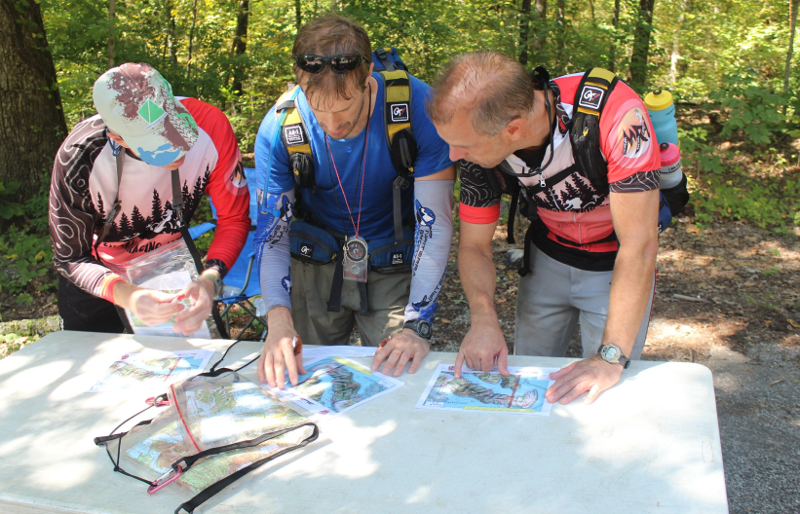
What we did not take into consideration was in order to get the point for the small orienteering course at TA 1 and the large orienteering course at TA 3, we needed to pick up all sub-points. Meaning… for us to receive the point for CP 36, we needed to find 36A and 36B. We were doing double the work for one point where as a bike point was worth one point. In retrospect, a better strategy would have been to get most of the bike points before going to TA 3 because they were full value. As it was, we did not do that and spent a lot of time at the orienteering course at TA 3, which would have been better spent somewhere else.
For my team, the strategy we chose was, perhaps, not ideal. We still did very well in the race and had a great time, except for being eaten alive by seed ticks. Strategy is one of the key elements of an adventure race, and often one of the toughest for me. This is yet another reason why I love adventure racing so much. Fitness, navigation skills, and strategy – a challenge for my body and mind… what more could I ask for.

